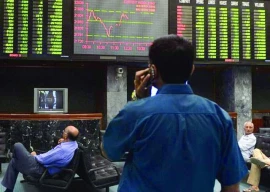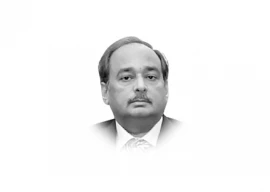
Is that their premium architecture, advance construction technologies, high quality infrastructure, reformist zoning or citizens who have trust and pride in their cities, strong back-end economies and something else that one might not be able to cognise as a layman.
Building technology: Mayor urges architects to update technology
A city is substantially more than an assemblage of concrete and steel for people to live and work. Cities are new nations and economic powerhouses that contribute more than 75% to the core of nation’s financial, social and cultural prosperity – however, each with inimitable identities and management propositions.
Cities are where all social, cultural, economic, scholarly and political powers manifest to show some real good for the inhabitants.
Contemporary urban archipelagos incontrovertibly entail to verbalise a preponderant development and governance model to control and direct the city’s spatial, economic and morphological capacities in an organised manner rather than following an ad hoc and piecemeal brick-mortar development process.
While delving down the urban history and success stories of urban heavyweights, one would definitely understand the prime driver of success was the inclusive urban planning model and nothing else.
People of Gwadar cannot be marginalised under ambitious development
The guiding model in shape of city master plans had remained and will remain the egis art and science to shape these complex urban structures into desirable places to live, invest and earn, whether one acknowledges it or not. The city master plan, being a comprehensive document, charts the course of a city’s development for present and future as envisaged by a city vision translated from political manifestos, citizen’s aspirations, national and sub-national economic development perspective and local geospatial opportunities.
Plan-less brick-mortar insertions to bridge gaps in urban development obviously result in an inefficient (sometimes truly wasteful) use of resources, higher incidental costs and lower efficiencies on part of urban systems.
City master plans are normally devised keeping in mind a 10 to 20-year horizon to translate city’s vision, policies, citizen aspirations and political agendas into projects and infrastructure development strategies to satiate political agendas of incumbent governments. These plans normally cover areas like housing, infrastructure and municipal services, social infrastructure, transit, mobility, environmental management, urban design (including streetscape, open space design, etc in public realm) and enveloped by some governance models.
Pakistan lacks planning
Unfortunately, in Pakistan, no comprehensive urban planning framework exists like the Town and Country Planning Act 1947 of the UK and similar legislations in other parts of the world devised since the early 1900s to guide, direct, authorise and legitimate local/city governments to make and implement their city plans.
In Pakistan, plan-making was first advised through national five-year plans and varied forms of spatial planning followed thereafter. Large cities like Karachi, Lahore, Faisalabad, Rawalpindi, Islamabad, Quetta and Peshawar tend to have plans, but most of them remain outdated.
At present, out of 150 towns and cities in Punjab – 10 of these have crossed 1 million population benchmark, only a few have updated and practical plans despite the fact that Punjab’s Local Government Act 2013 and Development of Cities Act 1976 require all the local/city councils and development authorities to devise and implement city plans.
Nevertheless, urban as well as rural local councils have never been capacitated to develop and implement their plans. In Punjab, during recent years, a couple of plans were made but those never got implemented in true spirit because legal requirements carry few or no incentives or penalties. Other provinces are no different from Punjab.
Presently, more than 150 cities and towns in Punjab are being managed by a set of decade-old regulations. They were devised to regularise rampant illegal linear commercialisation, but just proved to be a tool to support and promote highly unsustainable sub-urban sprawl in the name of housing.
Architects of these tools clearly disregarded the contemporary concepts of modern-day mixed-use high-density urban form that has helped global cities in attracting investments by providing business-friendly spaces. This current regime of urban planning regulations clearly attempts to fit all with one size and rule cities from the provincial capital.
Ironically, cities are being managed against the globally accepted and recognised principles of egalitarian governance and localism and eventually putting them on lag on the global livability and competitiveness index.
Over the past decades, urban development in Pakistan has emerged as a plan-less brick-mortar insurrection as billions of rupees are being spent without plans.
Globally, urban planning is considered one of the costliest interventions and a single wrong decision can cost the exchequer an un-earnable plight for decades. No doubt, political incumbents come in power with promises to deliver and obviously attempt to fulfill their promises by executing out-of-plan brick-mortar infrastructure development projects without realising where and how much of these projects are aptly needed.
City managers, who are mostly civil servants, despite learning urban planning and development as almost half of their training curriculum, hardly appreciate plans just because plans limit their authority and free will to make decisions. Local councils, which are by law, responsible for plan-making, have never been capacitated financially or technically to make plans.
Before the 2018 general elections, none of the political parties talked about the economic potential of cities in their manifestos. Factually and historically, only planned cities have ever accrued any investment or yielded growth.
Dubai is a classic example of plan-led pro-investment zoning. Pakistanis alone ranked 3rd with $10 billion investment in Dubai’s real estate market in recent years. Can we bring back this investment with our orthodox city planning and management models that leave our cities with a myriad of problems?
Let’s also not forget, Dubai’s GDP was $105 billion in 2017, almost seven times the Punjab’s total budget outlay in the same year. If we still keep this urban business-as-usual, we will definitely miss the train to growth and prosperity since Pakistan’s economic future is urban.
Nadeem Khurshid is an urban planning professional and a professor with 25 years of public, private and donor sector consulting experience
Muhammad Shoaib holds a Masters in Public Policy and is currently working as head of urban planning in a Singapore based consulting firm
Published in The Express Tribune, August 6th, 2018.
Like Business on Facebook, follow @TribuneBiz on Twitter to stay informed and join in the conversation.























COMMENTS
Comments are moderated and generally will be posted if they are on-topic and not abusive.
For more information, please see our Comments FAQ